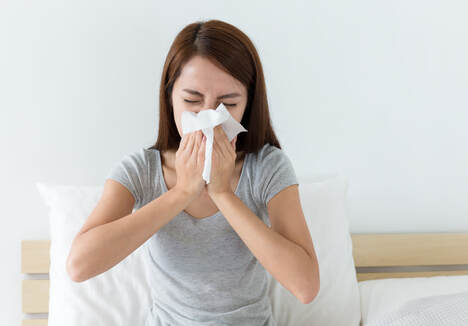|
(NC) While most people associate allergy season with the warmer months, many don’t realize that allergy symptoms and triggers can be even more prevalent as the weather cools. Colder weather means more time spent indoors, and therefore increased exposed to the number one cause of allergies in the home: household dust. According to the U.S. Environmental Protection Agency, indoor air quality can be up to five times worse than outdoor air quality, so the importance of mitigating exposure to household allergens is even more vital during the cooler months. Reduce exposure to indoor allergens in your home with these simple tips: Properly maintain your heating system: Heating systems are constantly circulating indoor air, which means dust, pet dander and pollen can collect inside the unit and recirculate throughout the home. Combat this issue by ensuring routine inspections by an HVAC technician and change the filter on a regular basis to decrease air pollution risks. Avoid indoor air contaminants: Many common household items can pose risks to indoor air quality. Fireplaces, candles, scented plug-ins, soaps, cosmetics and aerosol sprays are some of the commonly used products that can negatively impact indoor air quality. A study recently published by Science Magazine revealed that these common items can cause as much pollution as car emissions. Use an indoor air purifier: Purifiers such as the Dyson Pure Hot+Cool purifying fan use intelligent sensors to automatically sense pollutants and allergens. The machine captures 99.97 per cent of microscopic allergens and pollutants as small as 0.3 microns, including particulate matter, bacteria, pollen and mould, and projects clean air throughout a whole room. Allow outdoor air ventilation: Many of us keep windows and doors shut tight to “keep the heat in,” but proper ventilation is key to providing fresh air to your home. The Canadian Centre for Occupational Health and Safety lists four main purposes of ventilation: providing a continuous supply of fresh outside air; helping maintain temperature and humidity at comfortable levels; reducing fire or explosion hazards; help remove or dilute airborne contaminants. Learn about Heat Recovery Ventilation Systems
0 Comments
Leave a Reply. |
AuthorGil Strachan is a professional home inspector, representing Electrospec Home Inspection Services in east-central Ontario since 1994. CategoriesAll Appliances Buying And Selling Cooling Electrical Environmental Exterior Health And Safety Heating Home Improvement Home Inspection Insulation Insurance Interior Plumbing Roofing Special Structure Archives
January 2024
|


